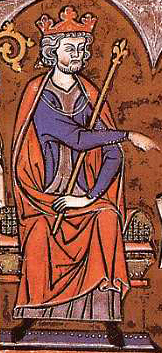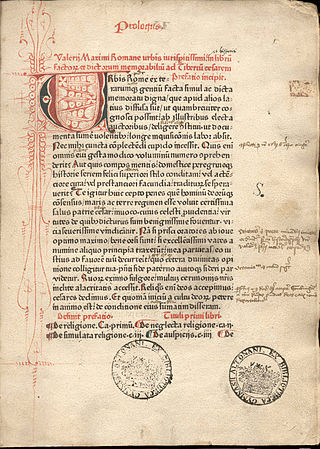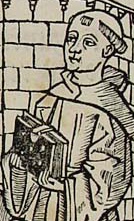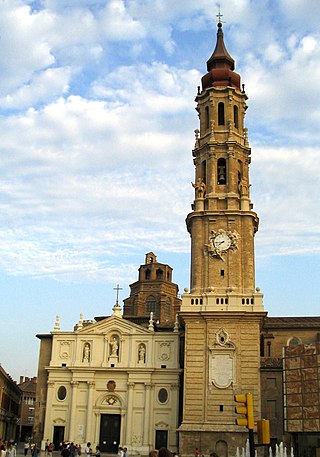
James I the Conqueror was King of Aragon, Count of Barcelona and Lord of Montpellier from 1213 to 1276; King of Majorca from 1231 to 1276; and Valencia from 1238 to 1276. His long reign of 62 years is not only the longest of any Iberian monarch, but one of the longest monarchical reigns in history, ahead of Hirohito but remaining behind Queen Victoria and Ferdinand III of Naples and Sicily. He saw the expansion of the Crown of Aragon in three directions: Languedoc to the north, the Balearic Islands to the southeast, and Valencia to the south. By a treaty with Louis IX of France, he achieved the renunciation of any possible claim of French suzerainty over the County of Barcelona and the other Catalan counties, while he renounced northward expansion and taking back the once Catalan territories in Occitania and vassal counties loyal to the County of Barcelona, lands that were lost by his father Peter II of Aragon in the Battle of Muret during the Albigensian Crusade and annexed by the Kingdom of France, and then decided to turn south. His great part in the Reconquista was similar in Mediterranean Spain to that of his contemporary Ferdinand III of Castile in Andalusia. One of the main reasons for this formal renunciation of most of the once Catalan territories in Languedoc and Occitania and any expansion into them is the fact that he was raised by the Knights Templar crusaders, who had defeated his father fighting for the Pope alongside the French, so it was effectively forbidden for him to try to maintain the traditional influence of the Count of Barcelona that previously existed in Occitania and Languedoc.

Marcus Porcius Cato, also known as Cato the Censor, the Elder and the Wise, was a Roman soldier, senator, and historian known for his conservatism and opposition to Hellenization. He was the first to write history in Latin with his Origines, a now fragmentary work on the history of Rome. His work De agri cultura, a rambling work on agriculture, farming, rituals, and recipes, is the oldest extant prose written in the Latin language. His epithet "Elder" distinguishes him from his great-grandson Cato the Younger, who opposed Julius Caesar.

Valerius Maximus was a 1st-century Latin writer and author of a collection of historical anecdotes: Factorum et dictorum memorabilium libri IX. He worked during the reign of Tiberius.

Catalan literature is the name conventionally used to refer to literature written in the Catalan language. The focus of this article is not just the literature of Catalonia, but literature written in Catalan from anywhere, so that it includes writers from Andorra, the Valencian Community, Balearic Islands and other territories where any Catalan variant is spoken.

The County of Empúries, also known as the County of Ampurias, was a medieval county centred on the town of Empúries and enclosing the Catalan region of Peralada. It corresponds to the historic comarca of Empordà.

Francesc Eiximenis was a Franciscan Catalan writer who lived in the 14th-century Crown of Aragon. He was possibly one of the more successful medieval Catalan writers since his works were widely read, copied, published and translated. Therefore, it can be said that both in the literary and in the political sphere he had a lot of influence. Among his readers were numbered important people of his time, such as the kings of the Crown of Aragon Peter IV, John I and Martin I, the queen Maria de Luna, and the Pope of Avignon Benedict XIII.

The Archdiocese of Saragossa is a Latin diocese of the Catholic Church located in north-eastern Spain, in the province of Zaragoza, part of the autonomous community of Aragón. The archdiocese heads the ecclesiastical province of Saragossa, having metropolitan authority over the suffragan dioceses of Barbastro-Monzón, Huesca, Tarazona, and Teruel and Albarracín.

The Llibre dels fets is the autobiographical chronicle of the reign of James I of Aragon (1213–1276). It is written in Old Catalan in the first person and is the first chronologically of the four works classified as The Four Great Catalan Chronicles, all belonging to the early medieval Crown of Aragon, and its first royal dynasty, the House of Barcelona. James I inherited as a child the titles of King of Aragon, Count of Barcelona, and Lord of Montpellier, but also became by conquest King of Majorca and King of Valencia. James emphasises in his chronicles his conquest of Majorca (1229) and of Valencia (1238).

Father Antoni Maria Alcover i Sureda, also known as Mossèn Alcover was a modernist Majorcan writer, who wrote on a wide range of subjects including the Catholic Church, folklore and linguistics. He is chiefly associated with efforts to revive interest in the Catalan language and its dialects. Among his works was a Catalan-Valencian-Balearic dictionary.

Quintus Caecilius Metellus Pius Scipio, often referred to as Metellus Scipio, was a Roman senator and military commander. During the civil war between Julius Caesar and the senatorial faction led by Pompey, he was a staunch supporter of the latter. He led troops against Caesar's forces, mainly in the battles of Pharsalus and Thapsus, where he was defeated. He later committed suicide. Ronald Syme called him "the last Scipio of any consequence in Roman history."

Megullia, surnamed Dotata, was an ancient Roman noblewoman.
Floral Games were any of a series of historically related poetry contests with floral prizes. In Occitan, their original language, and Catalan they are known as Jocs florals. In French they became the Jeux floraux, and in Basque Lore jokoak. The original contests may have been inspired by the Roman Floralia held in honour of Flora.

Pere VI de Queralt was a Catalan nobleman, diplomat, and poet; "una destacada figura del seu temps". He was the nephew of Guerau de Queralt, husband of Clemença de Perellós, and lord of Santa Coloma. He is not to be confused with the knight Pere de Queralt of the thirteenth century, who reportedly fought a lion and won: an act commemorated in a carved vault keystone in the church of Santa Maria de Bell-lloc in Santa Coloma.

The bat is a heraldic symbol sometimes used as a charge, but most prominently used as a crest on or around the crown in municipal arms of the former Crown of Aragon—specifically in Valencia, Catalonia and the Balearic Islands.

Publius Cornelius Scipio Africanus was a Roman general and statesman, most notable as one of the main architects of Rome's victory against Carthage in the Second Punic War. Often regarded as one of the greatest military commanders and strategists of all time, his greatest military achievement was the defeat of Hannibal at the Battle of Zama in 202 BC. This victory in Africa earned him the honorific epithet Africanus, literally meaning "the African," but meant to be understood as a conqueror of Africa.

Santiago Posteguillo Gómez is a Spanish philologist, linguist and author, born in Valencia in 1967. He has become known for a number of novels set in Ancient Rome, especially his Scipio Africanus and Trajan trilogies.
The Allegationes (Statements) is a short memo, that was written by Francesc Eiximenis in Latin between 1398 and 1408 in Valencia. The scholar Albert Hauf transcribed and published this opuscule in 1986.

Curial e Güelfa is an anonymous Catalan chivalric romance of the fifteenth century, notable for incorporating elements of Italian humanism. Known from a single manuscript and unpublished until the twentieth century, it is today considered a highly original masterpiece.

Andreu Febrer i Callís was a Catalan soldier, courtier and poet.

















